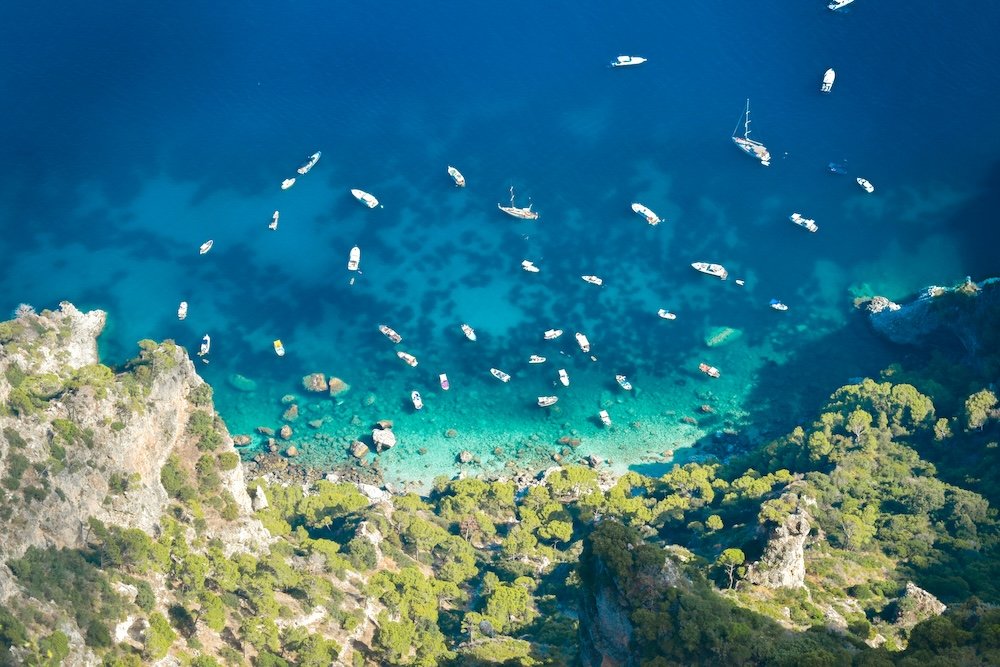
Want to discover where is the island of Capri?
Capri, an enchanting island in the Gulf of Naples, is shrouded in myth and famed for its breathtaking landscapes.
Often hailed as a gem of the Mediterranean, this small yet captivating destination is located off the Sorrentine Peninsula, on the south side of the Gulf of Naples in the Campania region of Italy.
The question “Where is the island of Capri?” leads us not only to a geographical location but also into a world rich with history, culture, and an undying appeal that has attracted travelers from all corners of the globe for centuries.
The allure of Capri is timeless. From the dramatic cliffs that plunge into the sparkling blue waters to the lush greenery and the fragrant blooms of bougainvillea that adorn its winding streets, Capri is a feast for the senses.
Its historical significance is profound, having been a resort since the time of the Roman Republic.
Famous historical figures, including Emperor Tiberius, built sumptuous villas here, drawn by the island’s beauty and its serene atmosphere.
Today, Capri continues to captivate modern-day visitors, offering a blend of natural beauty, history, and sophisticated relaxation.
Whether it’s the captivating views from the Anacapri or the mysterious allure of the famed Blue Grotto, Capri promises an unforgettable experience, making the answer to “Where is the island of Capri?” a call to the heart of the Mediterranean’s enchanting landscapes.
Geographical Location
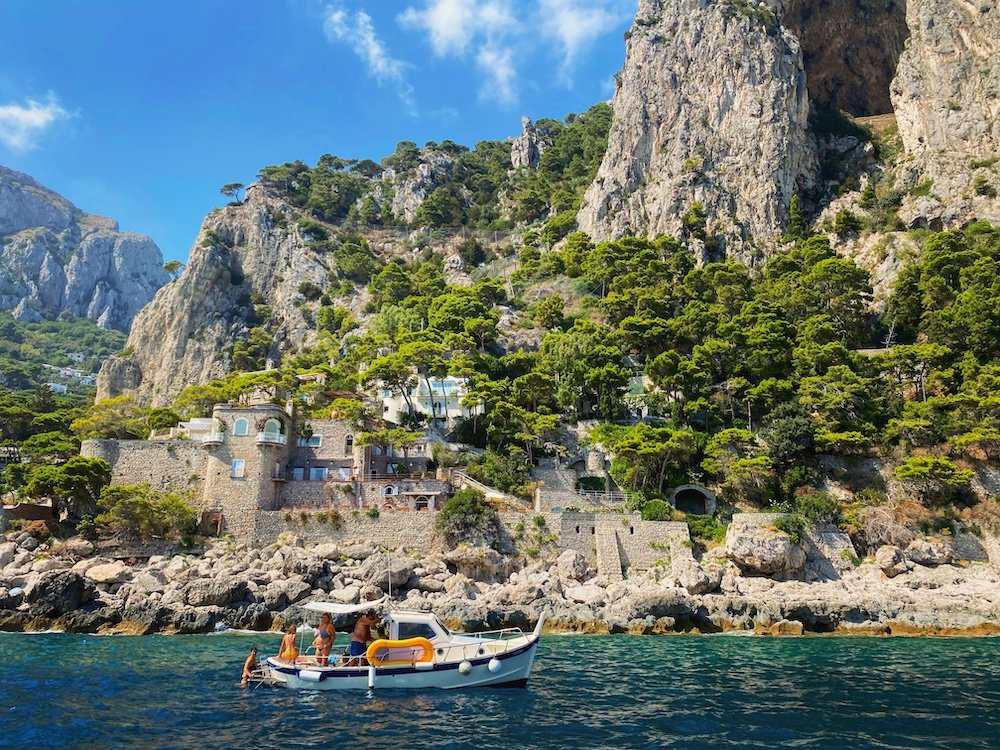
Capri is precisely positioned in the Tyrrhenian Sea, a part of the Mediterranean Sea, located off the Sorrentine Peninsula in southern Italy.
The island lies directly south of the city of Naples, nestled between the mainland and the Isle of Ischia.
For those wondering, “Where is the island of Capri?”—it’s situated at coordinates approximately 40.55°N latitude and 14.24°E longitude, making it a notable landmark in the Gulf of Naples.
The proximity of Capri to major Italian cities and landmarks adds to its accessibility and allure.
It is just a short ferry ride away from Naples, approximately 30 kilometers to the north, and similarly close to the popular tourist destination of Sorrento on the Amalfi Coast.
This close relationship with some of Italy’s most vibrant and historic centers makes Capri an attractive option for tourists looking to explore the rich cultural tapestry of Italy.
Furthermore, its location serves as a gateway to other magnificent sights in the region, including the archaeological wonders of Pompeii and Herculaneum, as well as the stunning Amalfi Coast and Positano.
Capri’s strategic location not only answers the query, “Where is the island of Capri?” but also highlights its role as a central point from which visitors can embark on a comprehensive exploration of Southern Italy’s most iconic and picturesque attractions.
History and Cultural Significance
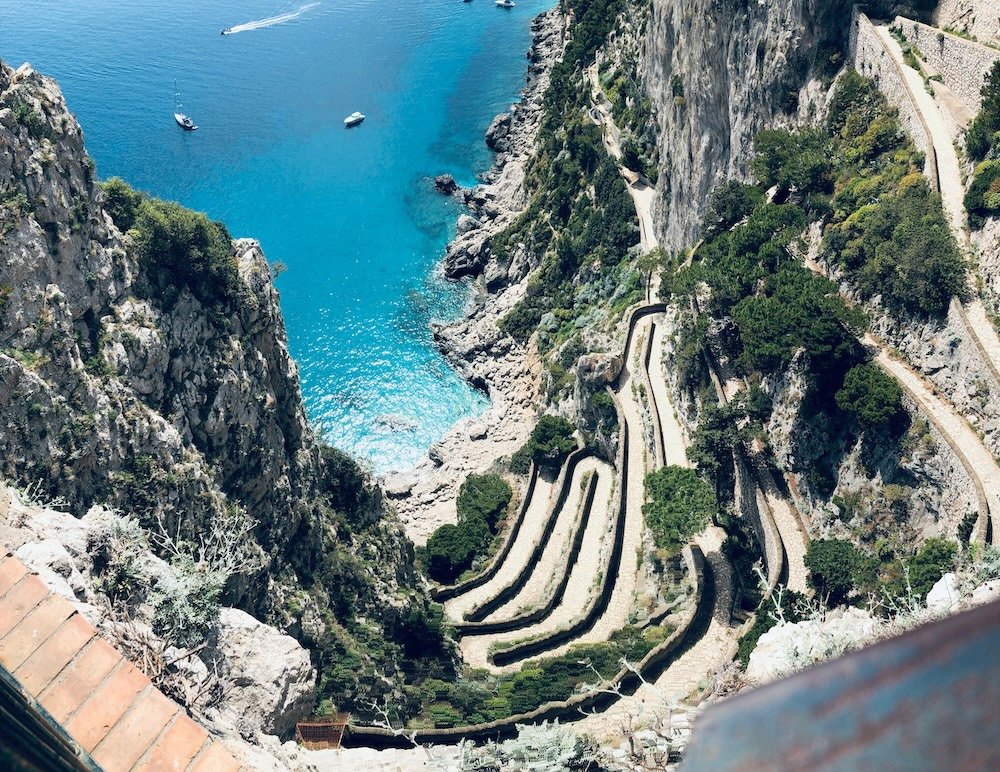
Capri holds a storied past that spans several millennia, contributing richly to its mystique and charm.
The island’s history dates back to the Neolithic period and the Bronze Age, with evidence of human settlement.
It was first developed as a cultural hub by the Greeks, who named it “Kapros” after the wild boars that once roamed here.
However, Capri’s true historical prominence began under Roman rule.
The most famous of its Roman residents was Emperor Tiberius, who led the Roman Empire from his luxurious villas on Capri, most notably the Villa Jovis, one of the best-preserved Roman villas in Italy.
The island’s allure did not wane with the fall of the Roman Empire; it became a prized gem in the Gulf of Naples, celebrated for its stunning beauty and serene environment.
Throughout the medieval period, Capri was fortified to protect against pirates.
By the 19th century, Capri had begun to attract a new wave of admirers: artists, writers, and intellectuals drawn by its enchanting beauty and tranquil lifestyle, marking the beginning of its modern reputation as a haven for the artistic community.
The cultural impacts of Capri are profound. It has been a muse for countless artists, influencing a wide array of works.
Painters like John Singer Sargent and writers like Graham Greene have all found inspiration in its rugged landscapes and vibrant light.
The island also became synonymous with refined elegance and an exclusive lifestyle, attracting celebrities and socialites from around the world, which has shaped its culture into one of sophisticated leisure and high-profile retreat.
Notable historical figures associated with Capri include the Emperor Augustus, who first developed Capri; his successor Tiberius, who made it his imperial headquarters; and later, famous personalities like the Swedish physician Axel Munthe, whose villa now serves as a museum and a testament to his love for Capri.
More recently, the island has hosted celebrities from Jacqueline Kennedy to Leonardo DiCaprio, all drawn by its timeless appeal.
This rich tapestry of history and cultural significance not only answers the question, “Where is the island of Capri?” but also highlights why this island has remained a beacon of luxury, culture, and history, captivating all who visit.
How to Get to Capri
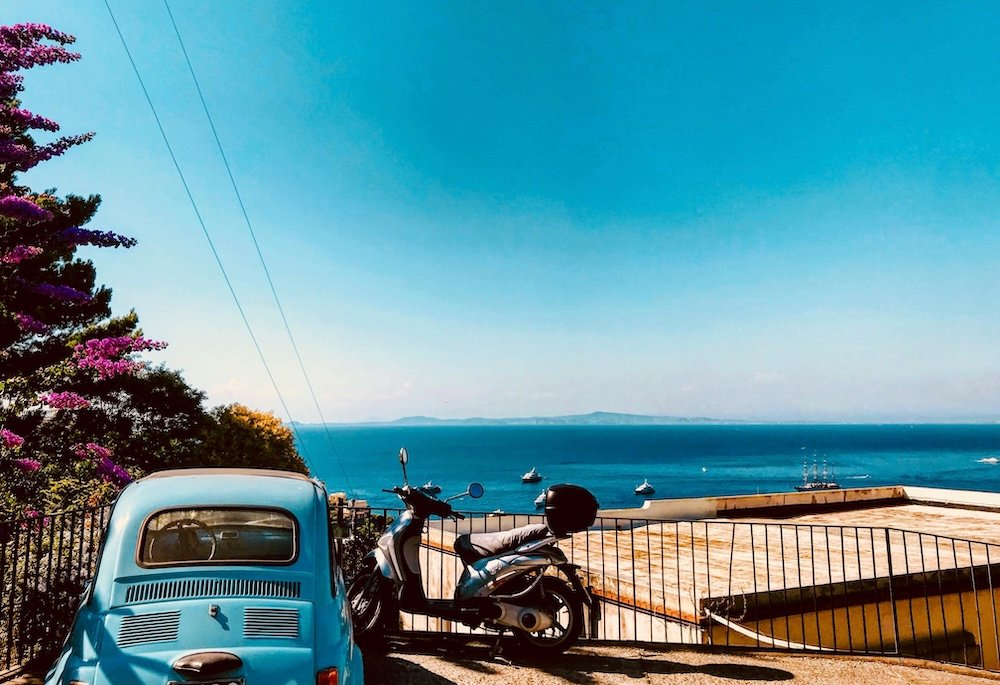
Reaching the island of Capri is an adventure in itself, offering various routes and modes of transportation that cater to different preferences and needs.
Whether you are coming from Naples, Sorrento, or other nearby cities, Capri is accessible and invites exploration.
From Naples
The most common departure points for Capri are from Naples, with ferries and hydrofoils frequently departing from Molo Beverello and Calata di Massa ports.
The journey takes about 40 to 80 minutes, depending on whether you choose a faster hydrofoil or a more leisurely ferry.
For those wondering precisely “where is the island of Capri?”—it’s just off the coast, making this a quick and scenic trip across the Bay of Naples.
From Sorrento
Another popular route is from Sorrento, which is closer to Capri than Naples.
Ferries from Sorrento to Capri depart regularly and take approximately 20 to 30 minutes.
This is a favored choice for tourists staying on the Amalfi Coast who wish to visit Capri as a day trip.
Transportation Options
- Ferry: The ferry is the most economical option and is ideal for those who aren’t in a hurry. It allows passengers to experience the sea journey with options to sit indoors or on outdoor decks, enjoying the Mediterranean sun and views.
- Hydrofoil: Faster than the ferry, hydrofoils are a preferred choice for travelers looking to maximize their time on the island. These vessels reduce the sea journey significantly and provide a smoother ride over the waters.
- Private Boat: For a more luxurious or private experience, chartering a boat to Capri can be arranged from Naples, Sorrento, and even Positano. This option offers flexibility in schedule and the exclusivity of a personal boat, ideal for special occasions or for those seeking a more intimate travel experience.
- Helicopter: For the ultimate in speed and luxury, helicopters can be chartered from Naples. This mode of transport provides breathtaking aerial views of the Bay of Naples and the island itself, making it a memorable albeit more costly option.
Best Times to Visit
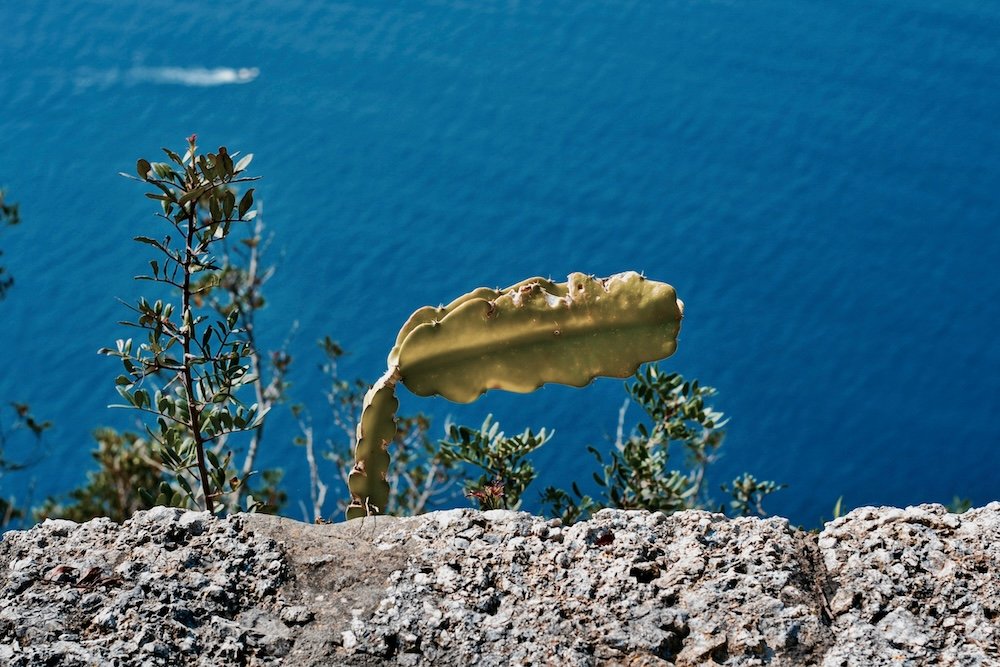
Capri is a year-round destination, each season offering its own charms and challenges.
The best time to visit largely depends on what you’re looking for in your trip—whether it’s basking in the sun at the height of summer or enjoying the tranquility of the island during the quieter months.
Tourist Seasons on Capri
- High Season (June to August): Summer is peak tourist season on Capri, when the island buzzes with activity. The weather is at its best—sunny and warm, ideal for swimming and sunbathing. The entire island, from its beaches to its iconic attractions like the Blue Grotto, is fully operational.
- Shoulder Season (April to May, September to October): These months are particularly pleasant as the weather remains warm but more temperate, and the crowds are less dense compared to the summer. This is a great time to explore the island’s natural beauty with more comfort and less rush.
- Low Season (November to March): Winter sees a significant drop in tourists. Many hotels and shops may close, especially in January and February, but the island’s charm is still palpable with its quiet streets and a more laid-back atmosphere.
Advantages and Disadvantages of Each Season
- High Season:
- Advantages: All tourist services and attractions are open. The weather is ideal for beach activities, boating, and enjoying the vibrant nightlife.
- Disadvantages: It can be crowded, and prices are generally higher. Booking accommodations and transportation in advance is crucial due to high demand.
- Shoulder Season:
- Advantages: The weather is still suitable for outdoor activities, and the island offers a more relaxed experience without the peak season crowds. Prices are more moderate, and you can enjoy local events and festivities in a more intimate setting.
- Disadvantages: Evening temperatures might require a light jacket, and occasional rain showers can occur. Some establishments begin to reduce their hours as the tourist season winds down.
- Low Season:
- Advantages: You’ll find the lowest prices for accommodations and a much quieter experience, ideal for those seeking solitude or interested in the local way of life without the tourist overlay.
- Disadvantages: Many hotels, restaurants, and shops close for the season, and ferry services are reduced. The weather can be unpredictable, and some attractions may be inaccessible due to maintenance or weather conditions.
Attractions and Activities
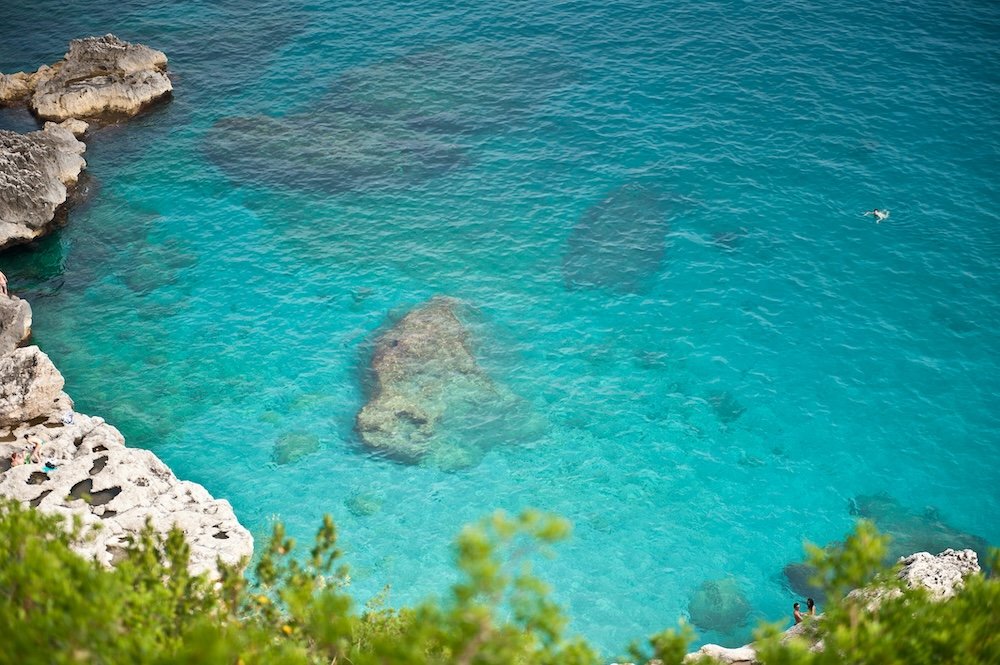
Capri is a treasure trove of natural beauty and cultural richness, offering a wide array of attractions and activities that cater to every type of traveler.
From the awe-inspiring natural wonders to historical sites steeped in legend, the island provides a diverse range of experiences that are sure to enrich any visit.
Major Attractions
- Blue Grotto (Grotta Azzurra): This stunning sea cave is Capri’s most famous attraction. Visitors are captivated by the brilliant blue of the water, caused by sunlight passing through an underwater cavity and illuminating the waters from below. The grotto is accessible by small rowboat from Marina Grande, weather permitting.
- Villa San Michele: Built by the Swedish physician Axel Munthe in the late 19th century, Villa San Michele in Anacapri is not only a beautiful villa with lush gardens but also a museum that offers panoramic views over the island towards the Sorrentine Peninsula. The villa’s architecture and artifacts reflect Munthe’s love for art and antiquities.
- Monte Solaro: The highest point on Capri, reachable by a chairlift from Anacapri or by hiking. The summit offers breathtaking views of the island and the surrounding Bay of Naples. It’s a must-visit for photographers and nature lovers alike.
Activities for Different Types of Travelers
- For the Hikers: Beyond Monte Solaro, Capri offers several scenic trails that reward walkers with stunning vistas and serene nature. The Path of the Forts is a particularly popular hiking route that provides historical insight into the island’s past defenses while offering sweeping views of the coastline.
- For the Shoppers: Capri’s boutique-lined streets, particularly those of Via Camerelle in Capri town, are famous for high fashion and local craftsmanship. Here, you can find everything from luxury brands to artisanal perfumes and handmade sandals, perfect for those looking to bring a piece of Capri style back home.
- For the Sightseers: A visit to the historic center of Capri town, with its picturesque piazzetta, is essential. Exploring the charming alleys, you’ll find the Gardens of Augustus, which provide splendid views of the Faraglioni rock formations. Sightseers can also take a boat tour around the island to appreciate its dramatic cliffs and hidden coves from a unique perspective.
- For the Cultural Enthusiasts: The Certosa di San Giacomo, a historic monastery near Capri town, hosts frequent art exhibitions and cultural events. The cultural heritage of Capri, along with its modern artistic endeavors, offers a deeper understanding and appreciation of the island.
Local Cuisine and Dining

Capri offers a delightful culinary journey that reflects its rich cultural heritage and Mediterranean charm.
The island’s cuisine is a testament to its lush landscapes and marine surroundings, featuring fresh seafood, vibrant vegetables, and the aromatic influence of Italian culinary traditions.
Overview of Capri’s Culinary Offerings
The gastronomy of Capri is heavily influenced by Neapolitan cuisine but with its own unique twists.
Local dishes often feature ingredients like tomatoes, olive oil, garlic, and seafood, which are staples of the Mediterranean diet.
Caprese salad, originating from Capri, epitomizes this simplicity and freshness, combining sliced tomatoes, mozzarella cheese, and basil, topped off with local olive oil.
Seafood plays a pivotal role in Capri’s dining scene, with dishes like spaghetti alle vongole (spaghetti with clams) and frittura di paranza (a mix of fried local small fish) being menu staples.
Lemons from the region also make a notable appearance in many dishes and drinks, including the famous limoncello liqueur.
Recommended Restaurants and Local Dishes to Try
- Da Paolino Lemon Trees: Known for its dreamlike setting under a grove of lemon trees, Da Paolino offers a range of traditional Caprese and Italian dishes. Their lemon-scented dishes and homemade limoncello are must-tries.
- La Capannina: Located a stone’s throw from the Piazzetta, La Capannina is one of Capri’s oldest restaurants. It’s famed for its home-cooked style meals and excellent wine list. Here, the ravioli Capresi, filled with caciotta cheese and marjoram, is a delightful dish that reflects local flavors.
- Ristorante Il Geranio: Near the Gardens of Augustus and overlooking the Faraglioni, Il Geranio offers a perfect combination of spectacular views and fine dining. Their seafood dishes, particularly the risotto alla pescatora (seafood risotto), are exquisitely prepared and presented.
- L’Olivo: For those looking for a more upscale dining experience, L’Olivo, which boasts two Michelin stars, offers innovative interpretations of Mediterranean and Caprese flavors. Their tasting menus, which change seasonally, provide a culinary journey through the island’s best offerings.
- Bar Alberto: For a casual and authentic Capri experience, Bar Alberto in Anacapri is the go-to for a quick panini, pizza, or a refreshing gelato, perfect for a lunch break between sightseeing excursions.
Accommodation Options
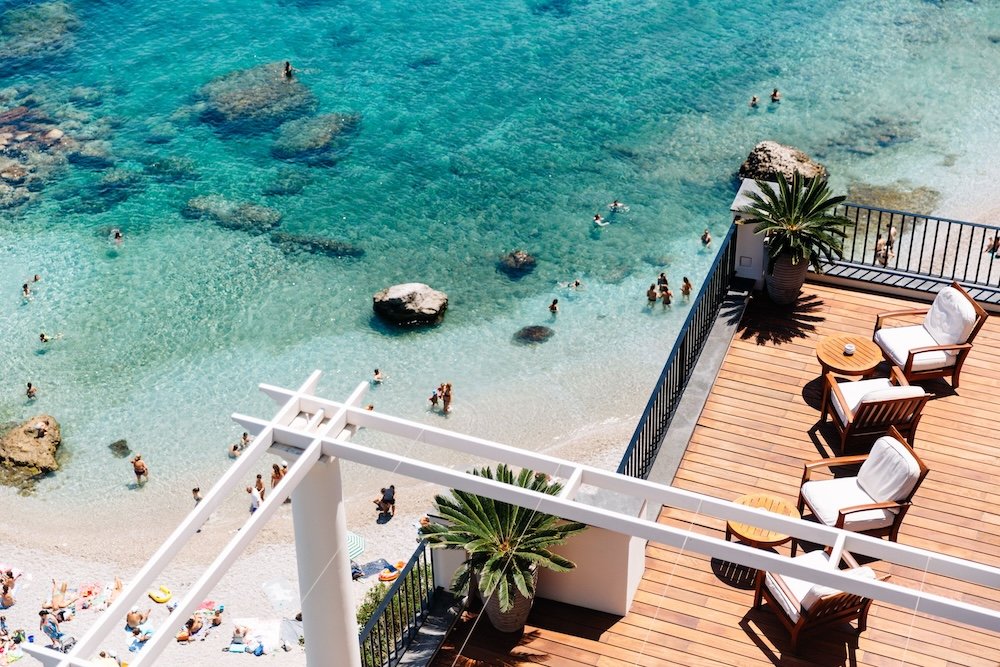
Capri offers a diverse array of accommodation options, catering to all tastes and budgets.
Whether you’re seeking the opulence of a luxury hotel, the homely comfort of a bed and breakfast, or the privacy of a rental property, Capri has something to suit every visitor.
Variety of Accommodations
- Luxury Hotels: For those who prefer a lavish stay, Capri boasts several high-end hotels that offer world-class amenities, exquisite dining, and breathtaking views. The Capri Palace Hotel & Spa in Anacapri is renowned for its art-filled interiors and a Michelin-starred restaurant, making it a favorite for those seeking luxury. Another top choice is the JK Place Capri, which stands out with its elegant, personalized service and stunning seaside location.
- Bed and Breakfasts (B&Bs): For a more intimate and personal experience, B&Bs on Capri offer comfort and local charm. These smaller accommodations often provide a cozy atmosphere and a chance to experience Capri like a local. Villa Patrizi, for example, is known for its warm hospitality and lovely garden settings, providing a peaceful retreat away from the more tourist-heavy areas.
- Rental Properties: Ideal for families or groups seeking more space and privacy, rental properties such as villas and apartments are available across the island. These options offer flexibility in terms of catering and can be a cost-effective way to stay, especially for longer visits. Websites like Airbnb and Vrbo list numerous properties that range from luxurious villas with private pools to quaint, budget-friendly apartments.
Tips for Choosing the Best Place Based on Budget and Preferences
- Consider the Location: Choose a location based on the type of vacation you’re planning. If you prefer to be in the heart of the action, staying in Capri town might be best. For a quieter, more relaxed atmosphere, Anacapri could be ideal.
- Check Accessibility: Some areas of Capri, particularly the higher parts, can be less accessible, requiring extensive walking or taking the local buses. Ensure your accommodation is conveniently located to manage mobility issues or to suit your comfort with navigating steep and busy areas.
- Review Amenities: Depending on your needs, check what amenities are offered. Some might prefer hotels with pools, spas, and on-site dining, while others might value free Wi-Fi and breakfast included at a B&B.
- Read Reviews: Always look at recent reviews to gauge the quality of the accommodations and the reliability of the services provided. Reviews can offer insights into the real experience of staying at the property, beyond what is advertised.
- Book in Advance: Especially if visiting during the high season, booking your accommodation well in advance is crucial as places fill up fast. Early reservations also often secure better rates.
Tips for Travelers
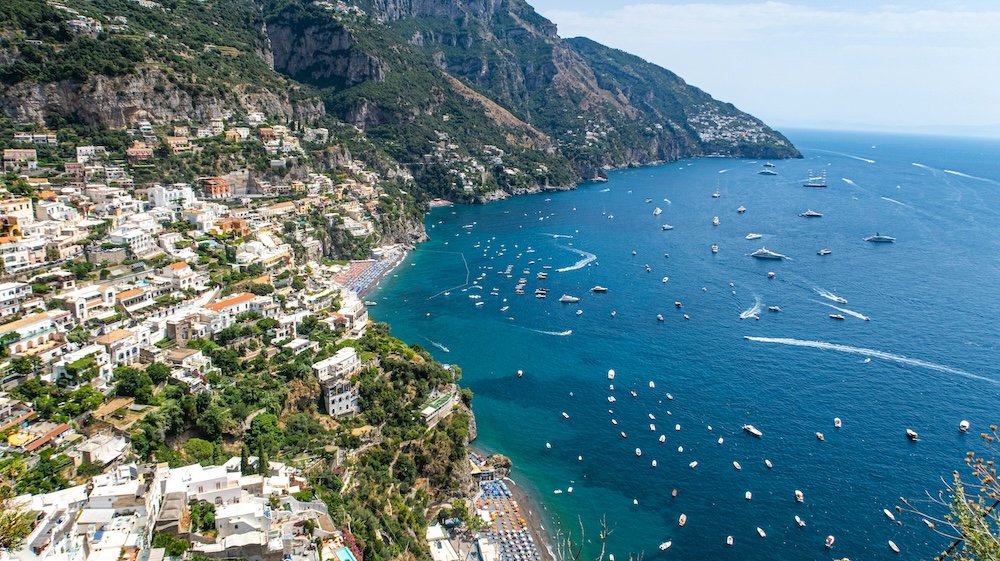
Visiting Capri for the first time is an exciting experience, but like any travel destination, it comes with its own set of considerations to ensure a smooth and enjoya
Here are some practical tips for first-time visitors, covering everything from currency and la=09 vrtation and safety.
Practical Advice for First-Time Visitors
- Currency: The currency used in Capri, as in the rest of Italy, is the Euro (EUR). It’s advisable to have some cash on hand for smaller cafes and shops that might not accept credit cards, although most places do accept major credit cards.
- Language: Italian is the official language in Capri. While many in the tourist industry speak English, especially in hotels, restaurants, and major attractions, learning a few basic Italian phrases can enhance your interaction with locals and show respect for the local culture.
- Transportation Tips:
- Getting Around: Capri is a small island and can be easily explored on foot. However, for longer distances, there are taxis and a funicular railway that connects the port of Marina Grande with the town of Capri. Buses are also available, especially useful for traveling between Capri and Anacapri.
- Renting Scooters: Renting a scooter can be a fun way to explore the island at your own pace. Just be sure you are comfortable with narrow, winding roads.
- Boat Rentals: Consider renting a boat for a few hours to see the island from the water and visit otherwise inaccessible grottoes and beaches.
Safety Tips and Navigating Tourist Traps
- Safety Tips: Capri is generally very safe for tourists. However, as with any tourist destination, it’s wise to keep an eye on your belongings, especially in crowded areas like ferry terminals and popular tourist spots.
- Avoiding Tourist Traps:
- Restaurants: Be wary of restaurants in the main tourist areas that don’t display prices or those that seem overly crowded with tourists. These can sometimes charge higher prices for standard fare. Look for where locals are dining or ask your hotel for recommendations.
- Shopping: While shopping, be cautious of deals that seem too good to be true, particularly for high-end products. Authentic local products are worth paying for, but make sure they are legitimate.
- Excursions: When booking any excursions, such as boat trips or guided tours, it’s best to use reputable companies. Check reviews online or seek recommendations from your accommodation provider to ensure you get a quality service without overpaying.
- Respect Local Etiquette: Capri is an upscale destination, and showing respect in how you dress and behave can go a long way. When visiting churches or religious sites, for instance, make sure to dress modestly.
Myths and Legends of Capri
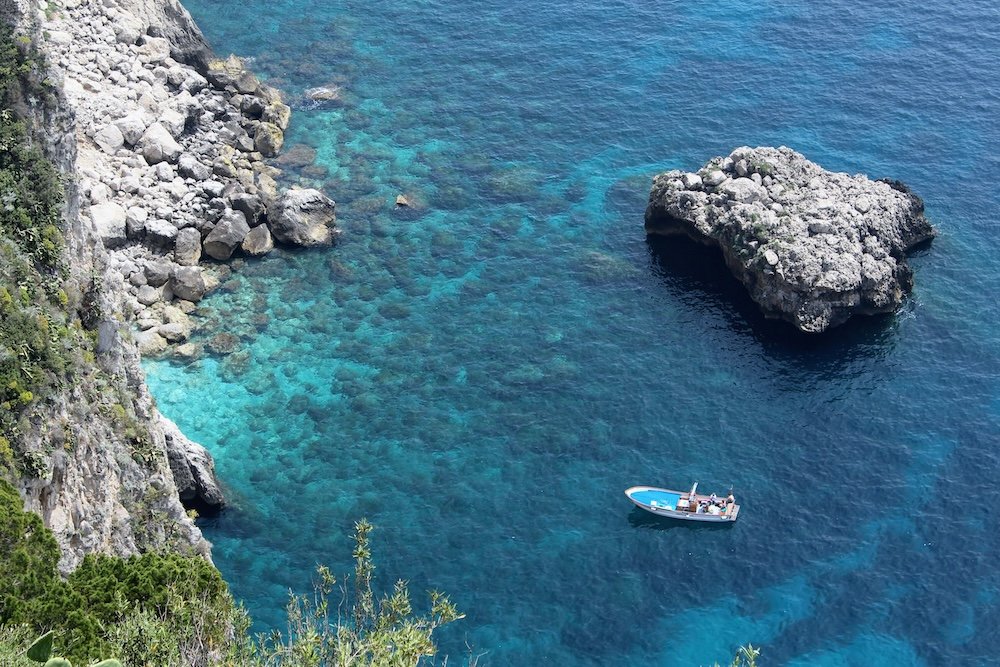
Capri is not only celebrated for its stunning landscapes and cultural heritage but also for its rich tapestry of myths and legends that add a mystical allure to the island.
These stories, passed down through generations, enhance the enchanting experience of visiting Capri, making it seem as if you’re stepping into a world where the line between reality and myth blurs.
Local Myths and Legends
- The Sirens of Capri: One of the most famous legends associated with Capri is that of the Sirens, mythical creatures said to lure sailors to their doom with their enchanting music and voices. It is believed that the three small islands off Capri’s south coast, known as the Faraglioni, were inhabited by these sirens. The Greek hero Odysseus is said to have sailed past these rocky formations, famously instructing his crew to plug their ears with beeswax and tie him to the mast to resist their songs.
- The Blue Grotto (Grotta Azzurra): The magical Blue Grotto is associated with several legends. In Roman times, it was said to be the home of sea nymphs, and locals long avoided it due to fears of these supernatural creatures. Another legend suggests it was the personal swimming hole of Emperor Tiberius, who used the grotto for lascivious parties. The mysterious play of light inside the grotto contributes to its mystical reputation, with the water glowing an ethereal blue as sunlight passes through an underwater cavity.
- The Witch of Anacapri: A popular tale in local folklore is that of the Witch of Anacapri, who was said to possess the ability to transform into a bird and fly over the island at night. She was both feared and revered, believed to possess powerful knowledge of herbal remedies and potions.
- The Immortal Monk of Capri: Another legend tells of a monk who discovered the secret to eternal life and still roams the island, protecting hidden treasures and guiding lost souls. This tale adds an element of mystery and enchantment to the already captivating landscape of the island.
These myths and legends of Capri not only enrich the island’s history but also captivate the imagination of its visitors.
Whether these tales are steeped in truth or embroidered by generations of storytellers, they make every cove, cave, and cliff seem alive with the possibility of ancient secrets and mystical encounters.
Walking the paths and exploring the grottoes of Capri, one can’t help but feel a part of these age-old stories, experiencing the island not just as a beautiful destination but as a living narrative of myth and legend.
Famous Visitors and Inspirations

Capri has long been a muse for artists, writers, and celebrities, drawn not only by its scenic beauty but also by its serene ambiance and luxurious lifestyle.
This blend of natural charm and cultural prestige has made the island a favorite retreat for many notable figures, whose visits have further burnished Capri’s image as a glamorous, inspirational locale.
How Capri Has Inspired Artists and Writers
The island’s stunning vistas and unique light quality have inspired a plethora of artists.
John Singer Sargent, a renowned American painter, captured Capri’s beauty in several of his works, depicting its rugged landscapes and the vibrant sea.
Writers too have found their muse in Capri; the German author Axel Munthe built his dream home here, Villa San Michele, which is now a museum.
His book “The Story of San Michele” recounts his life on the island and has intrigued readers worldwide, compelling many to visit.
Capri has also featured prominently in modern literature and films, enhancing its allure.
The “Capri” episode in the TV series “Mad Men” and books like “The Talented Mr. Ripley” paint vivid pictures of the island, embedding it in popular culture as a symbol of exotic luxury and mysterious intrigue.
Famous Visitors and Their Influence on Capri’s Popularity
- Friedrich Nietzsche: The German philosopher visited Capri in the late 19th century and is said to have been profoundly influenced by its beauty while working on his philosophy of art.
- Gracie Fields: The English actress and singer owned a villa on Capri, which helped raise the island’s profile among the British and international jet set during the 1930s and 1940s.
- Jacqueline Kennedy: Her visits in the 1960s established Capri as a stylish holiday destination. The “Capri pants” became a fashion trend largely attributed to her refined style during her stays on the island.
- Celebrities of the Modern Era: In more recent years, Capri has continued to attract a steady stream of celebrities such as Leonardo DiCaprio, Beyoncé, and George Clooney. Their frequent appearances on the island not only spotlight Capri in the media but also maintain its status as a premier and fashionable vacation spot.
Conclusion
Capri, with its breathtaking vistas, rich cultural heritage, and luxurious lifestyle, stands out as a jewel in the Mediterranean.
Its enchanting landscapes, from the stunning Blue Grotto to the highest peaks of Monte Solaro, offer visitors a variety of natural wonders to explore.
The island’s history, filled with tales of Roman emperors and mythical sirens, adds a layer of mystique that enhances its allure.
Throughout the year, Capri’s vibrant character shifts with the seasons, providing unique experiences whether you visit during the bustling high season or the tranquil low season.
Its culinary scene offers a taste of authentic Mediterranean cuisine, with local dishes that are simple yet bursting with flavor.
For accommodations, whether you choose the opulence of a luxury hotel, the quaint charm of a B&B, or the privacy of a rental villa, Capri promises comfort and style.
The island has inspired artists and writers for centuries, its scenic beauty capturing the hearts and imaginations of all who visit.
Celebrities and notable historical figures have been drawn to its shores, contributing to its reputation as a glamorous and inspirational retreat.
For those yearning to explore a place where beauty, history, and culture intersect spectacularly, Capri is a perfect choice.
Whether you’re seeking adventure, relaxation, or simply a brush with the extraordinary, Capri awaits to enchant and inspire.
Plan your visit to discover firsthand why this island continues to captivate and charm travelers from around the world.
Capri is not just a destination; it’s an experience, a dream that unfolds before your eyes, inviting you to be part of its ongoing story. So, why wait? Visit Capri and let your own story begin.
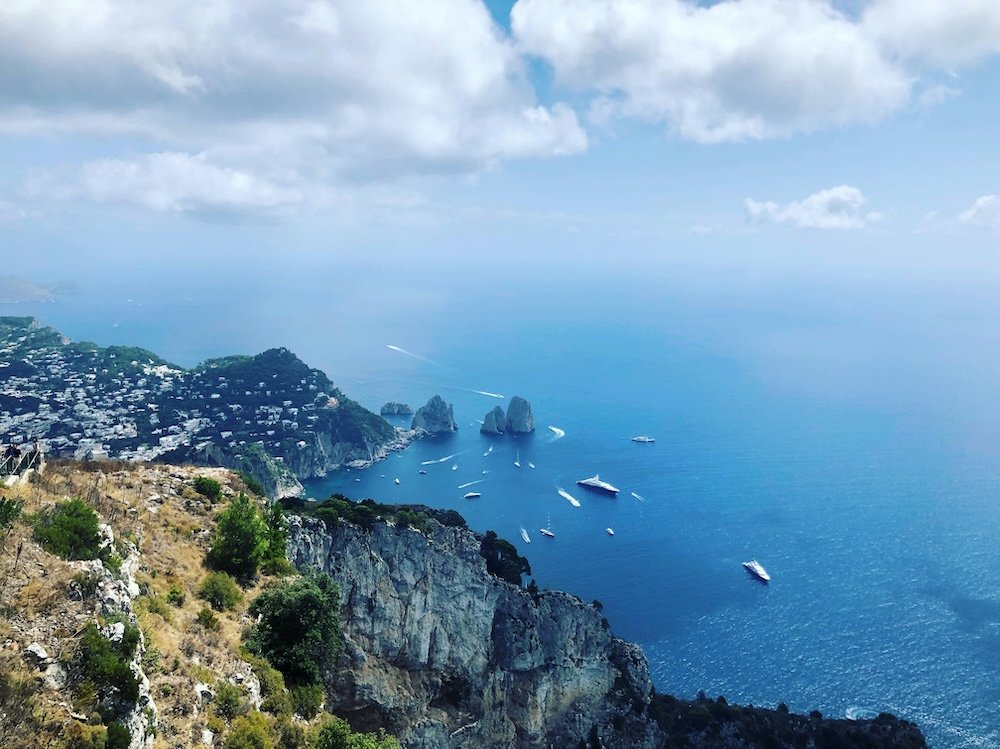
Additional Information
For those looking to deepen their understanding of Capri or to plan their visit with even more detail, the following resources and a brief FAQ section can provide further insight and practical advice.
Links and References for Further Reading
- Official Capri Tourism Website: Visit Capri.net for comprehensive and up-to-date information on everything from travel tips to event schedules.
- The Story of San Michele by Axel Munthe: This book offers a historical and deeply personal account of life on Capri and is an essential read for those interested in the island’s past.
- Lonely Planet – Capri Guide: Lonely Planet offers reliable travel advice and detailed guides that can help plan a perfect Capri itinerary.
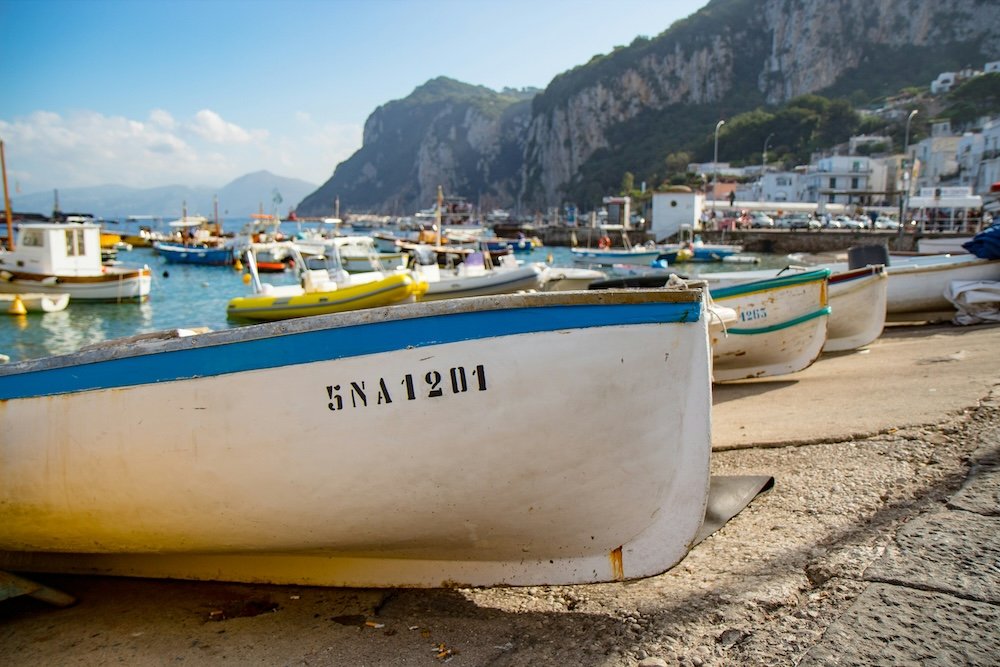
FAQ’s About Capri:
Why is Capri so famous?
Capri is famous for its stunning landscapes, rich history, and luxurious lifestyle.
The island boasts dramatic coastal scenery, upscale resorts, and the legendary Blue Grotto—a sea cave that is illuminated by a unique natural blue light.
Its allure has historically attracted artists, writers, and celebrities, adding to its glamorous reputation.
Is Capri in the Amalfi Coast?
No, Capri is not part of the Amalfi Coast.
It is an island located in the Tyrrhenian Sea, off the Sorrentine Peninsula, whereas the Amalfi Coast is located on the mainland of Italy, southeast of Naples.
However, Capri is often visited in conjunction with trips to the Amalfi Coast due to their proximity.
Is the island of Capri expensive?
Yes, Capri is considered an expensive destination.
It is known for its luxury accommodations, high-end restaurants, and exclusive shops.
Prices for food, lodging, and activities are generally higher than in many other parts of Italy, particularly during the peak tourist season.
How do I get to Capri, Italy?
The most common way to reach Capri is by ferry or hydrofoil from Naples, Sorrento, or the Amalfi Coast.
Ferries depart regularly from Naples and Sorrento, offering frequent services especially in the tourist season.
The journey by ferry from Naples can take about 40 to 80 minutes depending on the service chosen.
What celebrity lives on Capri?
While many celebrities visit Capri, no current high-profile celebrity is known to permanently reside on the island.
Historically, the island has been a retreat for various famous individuals, including writers and actors who have spent significant time or owned homes here.
Why do rich people go to Capri?
Rich people are drawn to Capri for its natural beauty, exclusivity, and luxurious offerings.
The island offers high-end hotels, private villas, designer boutiques, and gourmet dining options.
Additionally, its scenic beauty and relative privacy make it an attractive destination for those seeking a luxurious and serene getaway.
What is the best time to visit Capri Italy?
The best time to visit Capri is during the shoulder seasons of April to June and September to October.
During these months, the weather is pleasant, and the island is less crowded compared to the peak summer months. These periods offer a good balance of beautiful weather and reduced tourist traffic.
How long do you need in Capri?
A stay of 2 to 3 days is typically recommended to fully experience what Capri has to offer, including its natural sites, cultural attractions, and leisure activities.
This allows enough time to explore the island’s major sights at a relaxed pace, enjoy the local cuisine, and perhaps embark on a boat tour.
How long is the ferry ride from Naples to Capri?
The ferry ride from Naples to Capri typically takes between 40 to 80 minutes, depending on the type of service (ferry or hydrofoil) and the specific conditions of the day.
Can you swim in Capri Island?
Yes, you can swim in Capri.
The island features several beautiful beaches and coves where visitors can swim. Popular swimming spots include Marina Piccola, the Faraglioni Beach Club, and the beach at Marina Grande.
Can you swim at Isle of Capri?
Yes, the Isle of Capri offers various spots for swimming.
Beaches like Marina Piccola and others around the island provide excellent opportunities for swimming in the clear blue waters of the Mediterranean.
Can you swim in Capri for free?
Yes, there are places in Capri where you can swim for free.
While some beach clubs and private beaches charge for access and amenities, public beaches like Marina Grande offer free access to the sea where visitors can enjoy swimming without any cost.





